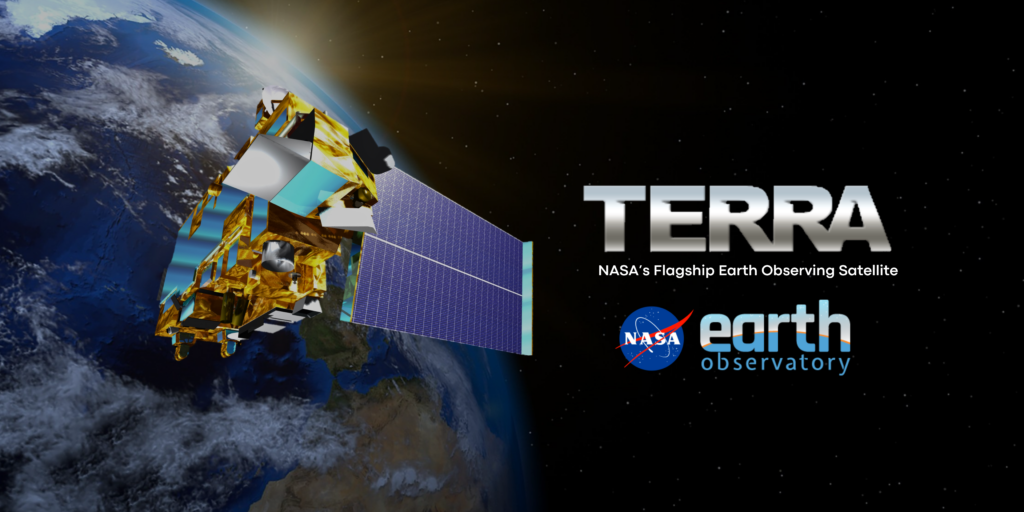Before we kick off an exciting year — full of celebrating Terra’s upcoming 25th Anniversary! — let’s take a moment to look back at the top-viewed monthly Earth Observatory stories featuring the Terra mission from 2023!
Click the linked month in each banner to jump down to a brief article summary and image thumbnail.
Want to know more? Click on either the linked URL or the image thumbnail below to view the original Earth Observatory story!
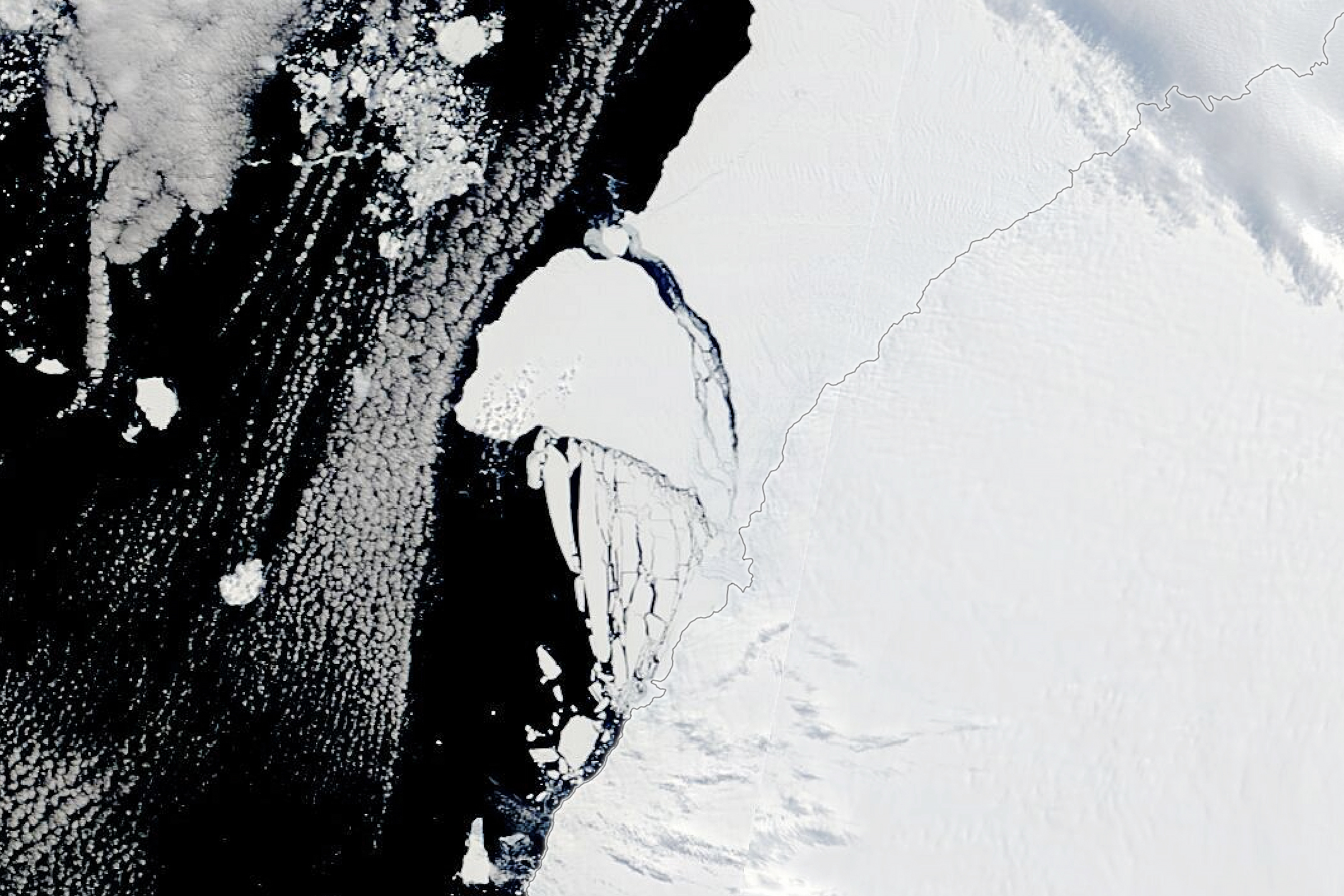
January 2023: “Antarctica’s Brunt Ice Shelf Finally Breaks“
The long-awaited break of the Chasm 1 rift in the Brunt Ice Shelf in Antarctica occurred on January 22, 2023, spawning Iceberg A-81, approximately 1550 square kilometers in size, as observed by NASA’s Terra satellite on January 24, 2023, marking a culmination of the rift’s growth since the 1970s.
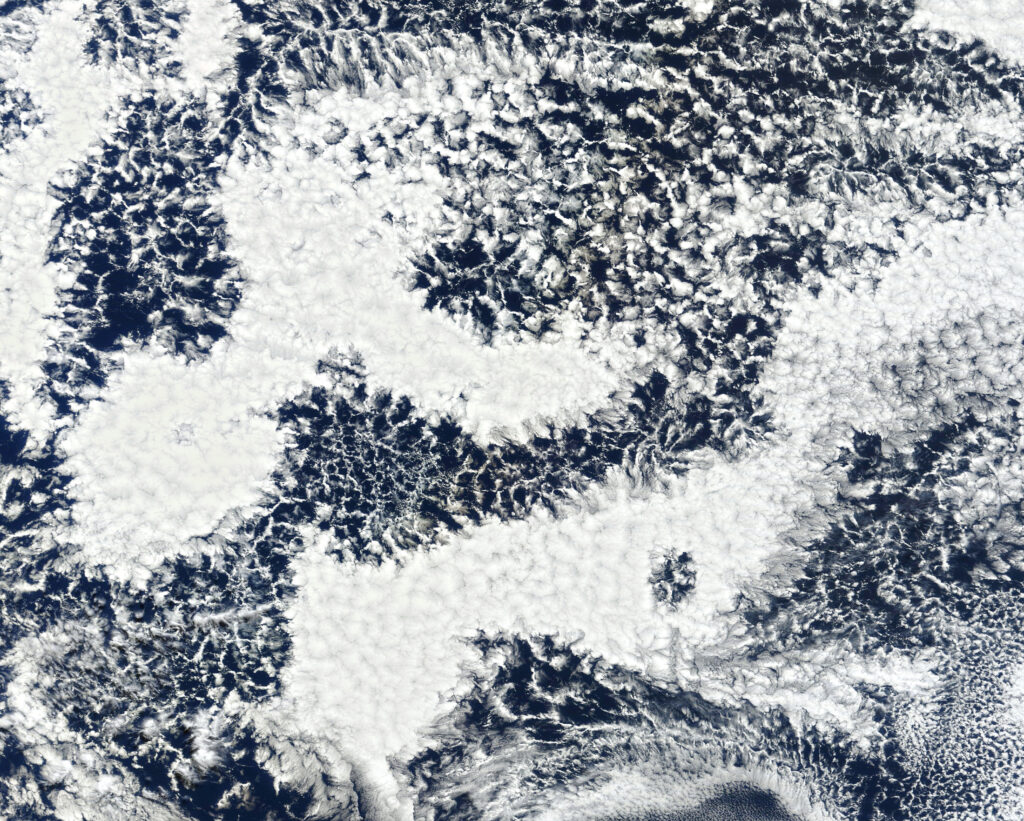
February 2023: “Ex-cell-ent Clouds off Chile’s Coast“
Satellites like Terra have shown that marine stratocumulus clouds, covering about 23% of global oceans, exhibit open-celled and closed-cell formations. Open-celled clouds generate rainfall, while closed-cell clouds produce little rain. Local air quality, influenced by factors like smoke and aerosols, can impact the transition between these cloud types. Recent Terra imagery captured off the coast of Chile highlight the intricate structures of these clouds.
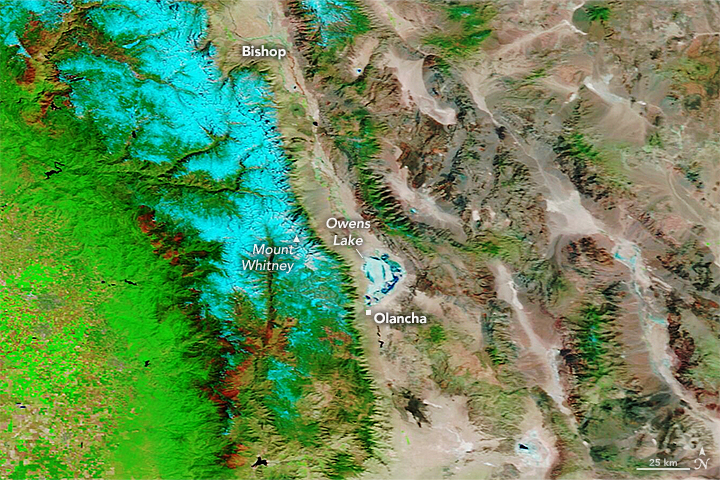
March 2023: “A Surge of Floodwater for Owens Lake“
In March 2023, California’s historically dry Owens Lake experienced an unprecedented rainfall event that led to the collapse of three sections of the Los Angeles Aqueduct, causing floodwaters to flow over the lakebed. The first of its kind, this breach prompted the Los Angeles Department of Water and Power to open floodwater spill gates for repairs. Terra satellite imagery on March 25, 2023, revealed the transformed landscape and highlights the importance of planning for future climate change impacts to water cycle extremes in the region.
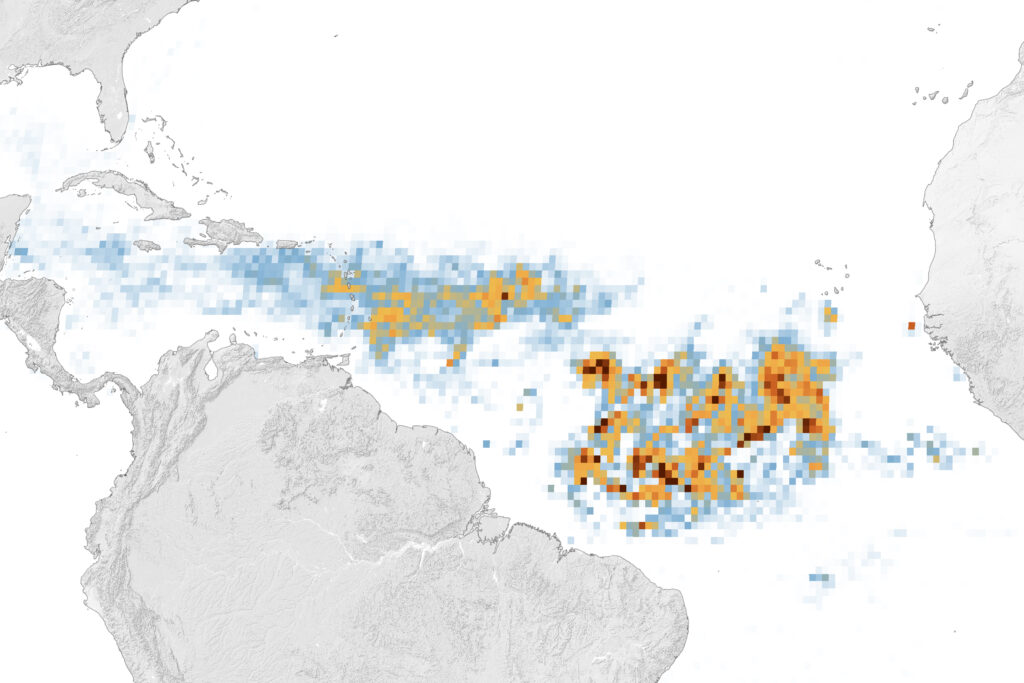
April 2023: “A Massive Seaweed Bloom in the Atlantic“
Last spring, the “Great Atlantic Sargassum Belt” witnessed its largest recorded Sargassum bloom, estimated at 13 million tons by University of South Florida researchers using NASA’s Terra and Aqua satellites. The seaweed, vital for ocean health, poses challenges near coasts, affecting marine species and tourism. The ongoing growth trend since 2011, influenced by nutrient inputs and changing ocean patterns, raises concerns for major beaching events along the Caribbean and Florida’s east coast.
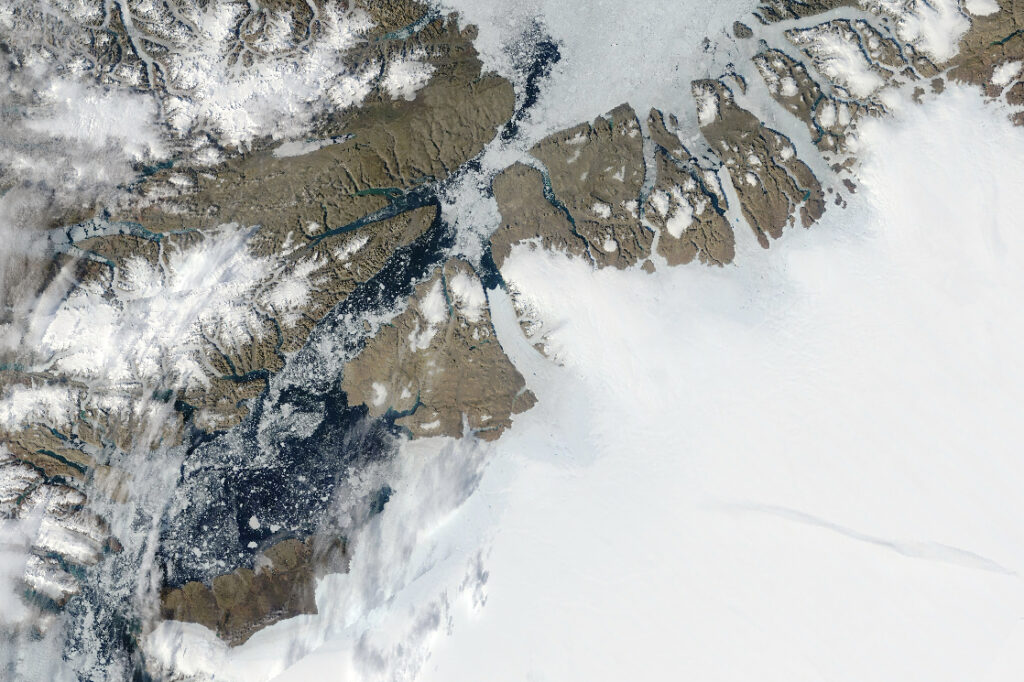
May 2023: “Retreat at Petermann Glacier“
Over twenty years of combined Terra imagery from Greenland show the Petermann Glacier’s retreat, thinning, and accelerated flow, resulting in a one-third reduction of the ice tongue during this period. Significant iceberg calving events, including a 2017 rift, raise concerns about future glacial melt. Warming ocean waters contribute to melting the glacier from below, a process that causes significant sea level rise.

June 2023: “Canadian Smoke Reaches Europe“
Last summer, smoke from Quebec’s ongoing wildfires crossed the Atlantic, darkening skies in southwestern Europe, shown in this imagery captured by Terra’s MODIS instrument on June 26, 2023. The plume of black carbon particles, spanning over 2,000 miles, impacted air quality in Europe and contributed to notable sunrises and sunsets, according to the UK Met Office.
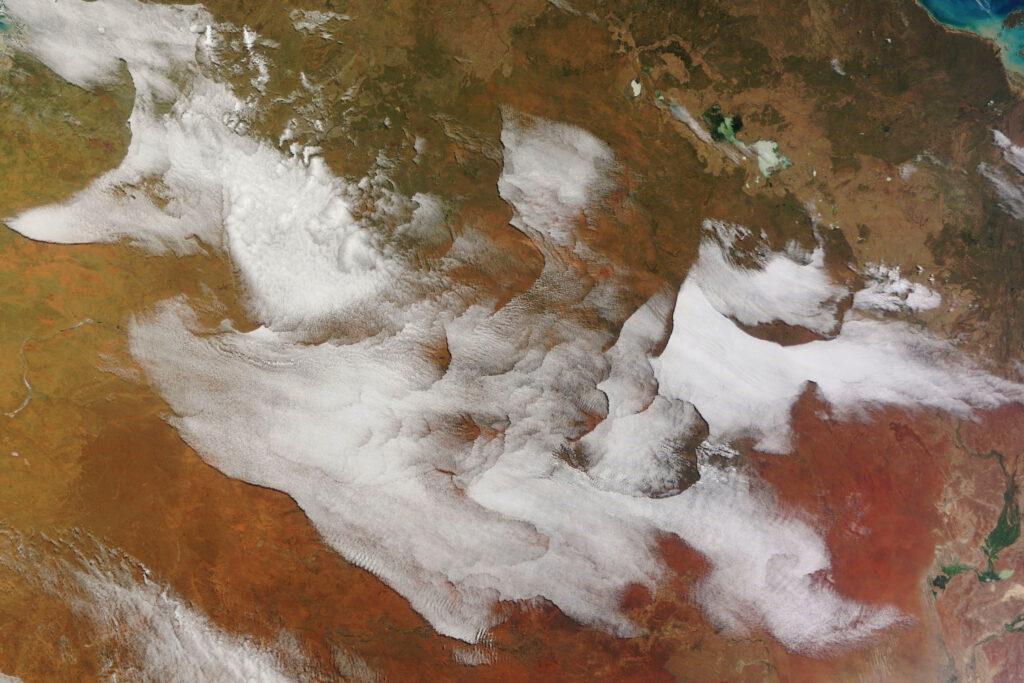
July 2023: “Curious Waves of Clouds Across Australia“
This past July, Terra captured a striking display of unusual clouds over Western Australia and the Northern Territory. The patterns, marked by abrupt edges and fine textures, intrigued experts, who suggested that these clouds were influenced by atmospheric stability processes. The large-scale shapes resembled fallstreak clouds, though at lower altitudes. The spectacle, forming overnight and vanishing by late morning, aligned with the destabilization of the lower atmosphere due to ground heat radiation.
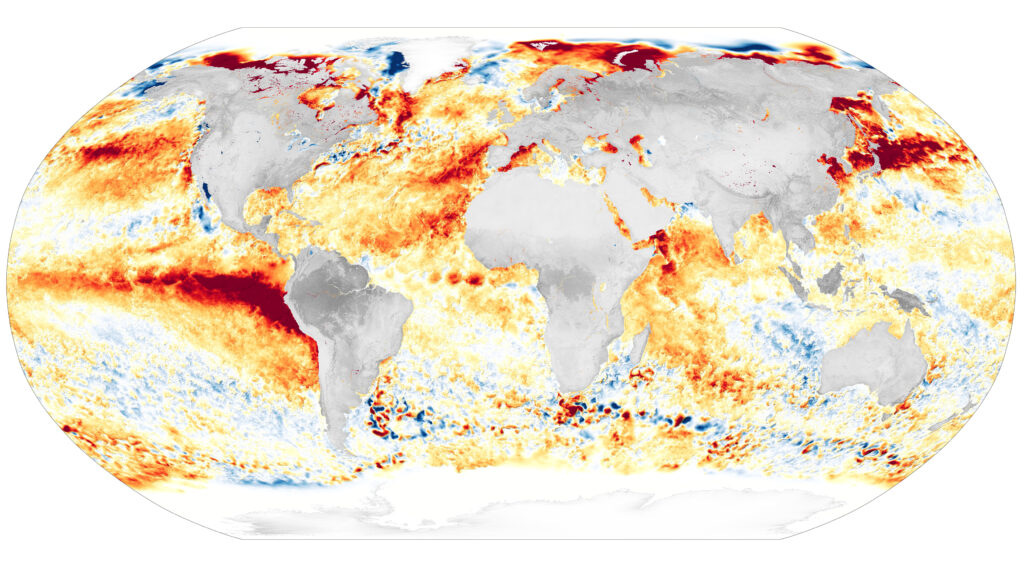
August 2023: “The Ocean Has a Fever“
July 2023 also marked record-high global sea surface temperatures, influenced by the developing El Niño in the Pacific and long-term warming trends. On August 21, 2023, anomalies exceeded 3°C (5.4°F), particularly in the equatorial Pacific, emphasizing El Niño’s significant impact on global sea surface temperatures and potential repercussions on weather patterns into winter. The map shown, derived from NASA’s JPL Multiscale Ultrahigh Resolution Sea Surface Temperature (MUR SST) project, integrates data from diverse sources, including NASA’s Terra satellite, while showcasing variations from the August 21, 2003-2014 daily average sea surface temperature.

September 2023: “Torrential Rain Wreaks Havoc in Libya“
On September 10, 2023, a low-pressure storm struck northeastern Libya in Africa, causing severe flooding in cities along the Mediterranean coast, particularly in Al Bayda and Derna. Located at the end of a dry valley, the city of Derna faced dam collapses along Wadi Derna, resulting in destructive floods. Satellite images from NASA’s Terra satellite on September 7 and 13 depict the flooded regions and inland wadis. The storm, dubbed Storm Daniel, exhibited characteristics of a “Mediterranean Hurricane” or “medi-cane” during its landfall.
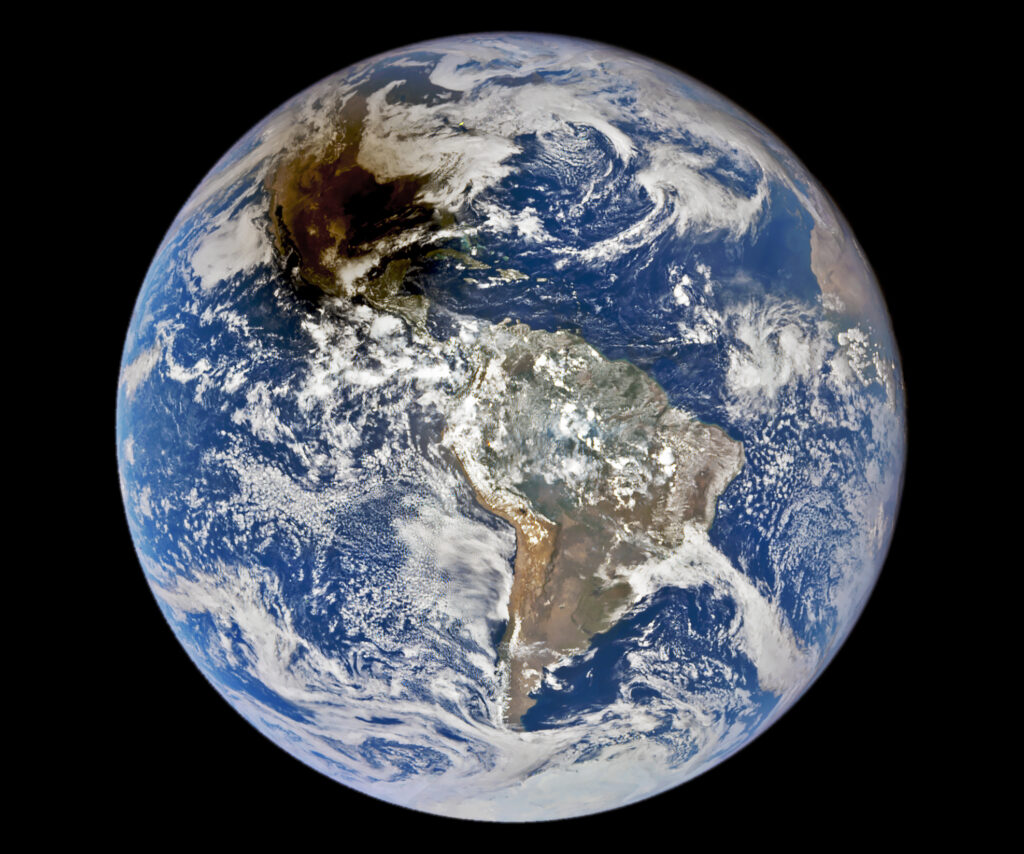
October 2023: “Darkened by the Moon’s Shadow“
On October 14, 2023, an annular solar eclipse, or “ring of fire,” graced the skies over the United States, Mexico, and parts of Central and South America. The map shown, created by NASA’s Scientific Visualization Studio using Terra and Aqua satellites’ MODIS data, outlines the eclipse’s path from Oregon to Texas. Duration contours on the map indicate the varying eclipse lengths. The next annular solar eclipse visible from the U.S. is expected on June 21, 2039, with a total solar eclipse on April 8, 2024.
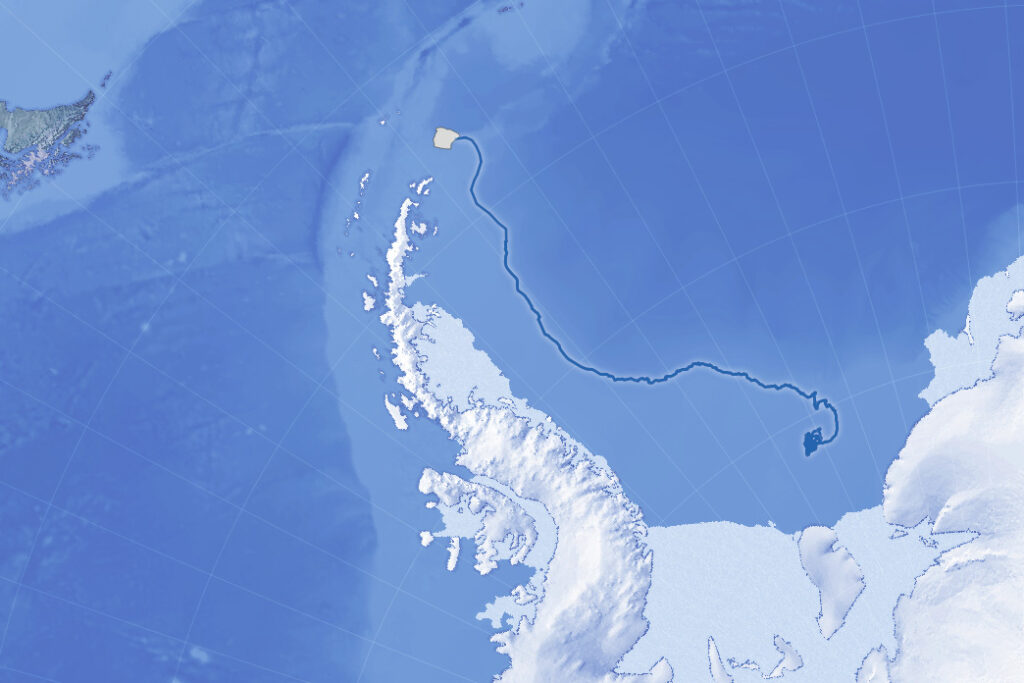
November 2023: “Antarctic Iceberg Sails Away“
In November 2023, Iceberg A-23A, which broke off the Filchner Ice Shelf in 1986, gained attention as it drifted northward across the Weddell Sea. Captured by NASA’s Terra satellite’s MODIS, the image shows the iceberg nearing islands at the Antarctic Peninsula, about 1,700 kilometers from its origin. For decades, the iceberg remained anchored near the ice shelf but became unstuck in the early 2020s, likely due to underwater melting. Riding the Weddell Sea Gyre, it measures about 4,300 square kilometers as of November 24, making it the world’s largest current iceberg.

December 2023: “As the Arctic Warms, Its Waters Are Emitting Carbon“
Wrapping up the year, new published research from December 2023 shows that the Arctic Ocean faces increased carbon dioxide emissions attributed to thawing permafrost and runoff in Canada’s Mackenzie River, challenging its role as a critical carbon sink. The ECCO-Darwin model, developed by NASA’s Jet Propulsion Laboratory, reveals that river discharge, particularly from the vast drainage area of the Mackenzie, leads to intensified CO2 outgassing in the southeastern Beaufort Sea and results in an annual net release of 0.13 million metric tons. Data from the Terra satellite, including this processed 2007 image from Terra’s ASTER instrument, aided researchers in their work to better determine the impact of this environmental shift in a rapidly warming Arctic region.


